10 Curiosities You Probably did not know about Pompeii Ruins
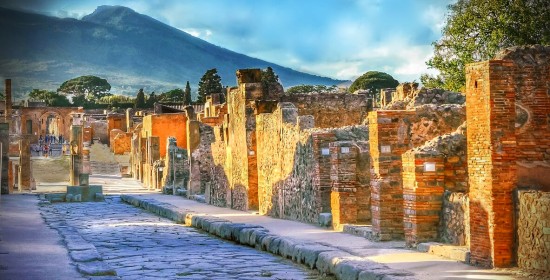
Buongiorno and welcome to Stefano’s RomeCabs travel blog!
For 20 years and counting, we’ve taken thousands of happy travelers to enjoy Pompeii on our tours to the Amalfi Coast from Rome or on a sightseeing transfer from Rome to Sorrento or Positano.
During a 2 hour Pompeii guided tour with a professionally licensed tour guide, you can learn so much about this incredible ancient city that suddenly perished in 79 AD following the catastrophic eruption of Mount Vesuvius.
Whether you have already visited Pompeii, plan to visit Pompeii on your future trip or cruise to Italy, or are simply fascinated by this ancient Roman city, we’d like to share with you 10 curiosities you probably didn’t know about Pompeii Ruins.
10 Curiosities You Probably Did Not Know about Pompeii Ruins
1. Pompeii has the oldest amphitheater in the world
The earliest amphitheater in the world that is still perfectly preserved is the one in Pompeii. Built out of stone in 70 BC, the amphitheater measured 445 by 341 feet and seated about 20,000 spectators.

According to inscriptions, the amphitheater was built by Quintius Valgus and M Procius, two of Roman general Sulla’s commanders who became magistrates after the city surrendered to the Romans.
In ancient times, the amphitheater hosted gladiator combats and arena games. In modern days, the ancient amphitheater hosts concerts thanks to its excellent acoustics.
2. Pompeii had One-Way Streets, street crossings, and heavy traffic
Professor Eric Poehler of the University of Massachusetts spent years studying the narrow streets of Pompeii, which, by the 1st century AD, the streets numbered about 100. About 80% of the streets were too narrow to be two-way streets, and the wear on stone curbs made by carts brushing against them is indicative of one-way traffic.
The narrow streets had slabs of stepping stones at specific intervals like modern-day crosswalks that are still in place today. Unlike modern pedestrian crossings created to keep pedestrians safe from traffic, in Pompeii, the stepping stones were implemented to keep pedestrians’ feet dry from rainwater, and clean from the filth, debris, and animal waste that accumulated in the streets.
The stone slabs were positioned in a specific way to create sufficient spaces between them for large carts and wagons to navigate over and were also adjusted to the height and width of the wheel axles.
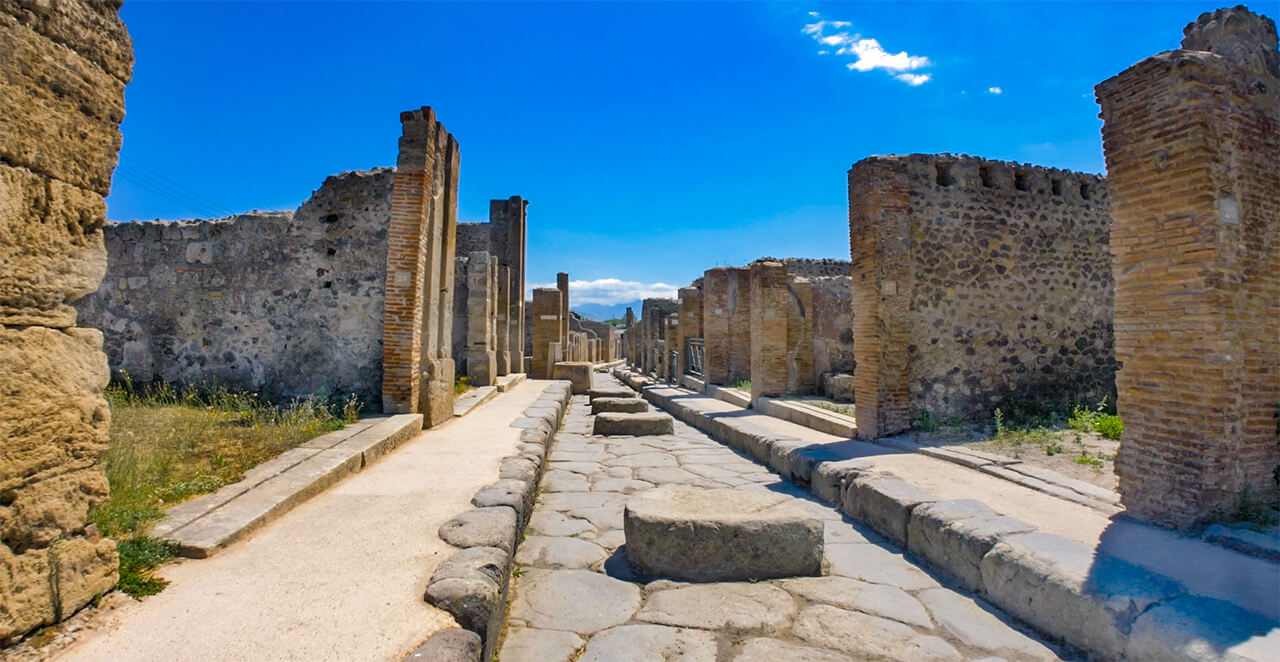
Literary references, reliefs, and even surviving wagons give us an idea of the types of transportation that traveled along Pompeii’s streets. Wagons and carts were collectively referred to as “vehicula”, from where the modern word vehicle originates from. Oxen-pulled wagons were called “plaustrum”. Two-wheeled wagons drawn by mules were called “carpentum”, and four-wheel wagons pulled by mules were called “carrus” which evolved into the modern word “carriage”.
Details such as carts’ and wagons’ wheel tracks that have also been preserved allow experts to map out the exact direction of traffic, offering us an even better idea of what it was like to live in an ancient Roman town like Pompeii.
While traffic flow was designed by the city administration, it was the responsibility of the people driving the carts and wagons to keep the traffic system going since there weren’t any traffic lights or stops. The apparent marks the wheel ruts left in the paving stones indicated heavy traffic.
When visiting Pompeii, check out the narrow roads and the pedestrian crossing slabs. You will truly be walking in the footsteps of the ancient Pompeiians.
3. Pompeiians went out to eat
Just like the Romans, Pompeiians also went out to eat, and archaeology shows us where the locals of Pompeii enjoyed eating out (or a fast-food takeout).
Why did the Pompeiians go out to eat?
While the wealthy preferred to eat at home in their opulent villas staffed with servants preparing meals in their kitchens, the poor class had no place to cook in their homes as many lived in apartment buildings (insulae) where the risk of fire prevented the tenants from cooking their food. Instead, they relied on eating out mainly at lunch or relying on fast food joints known as Thermopolia. Workers who did not have time to go home and eat also frequented the thermopolia for their meals during the day.
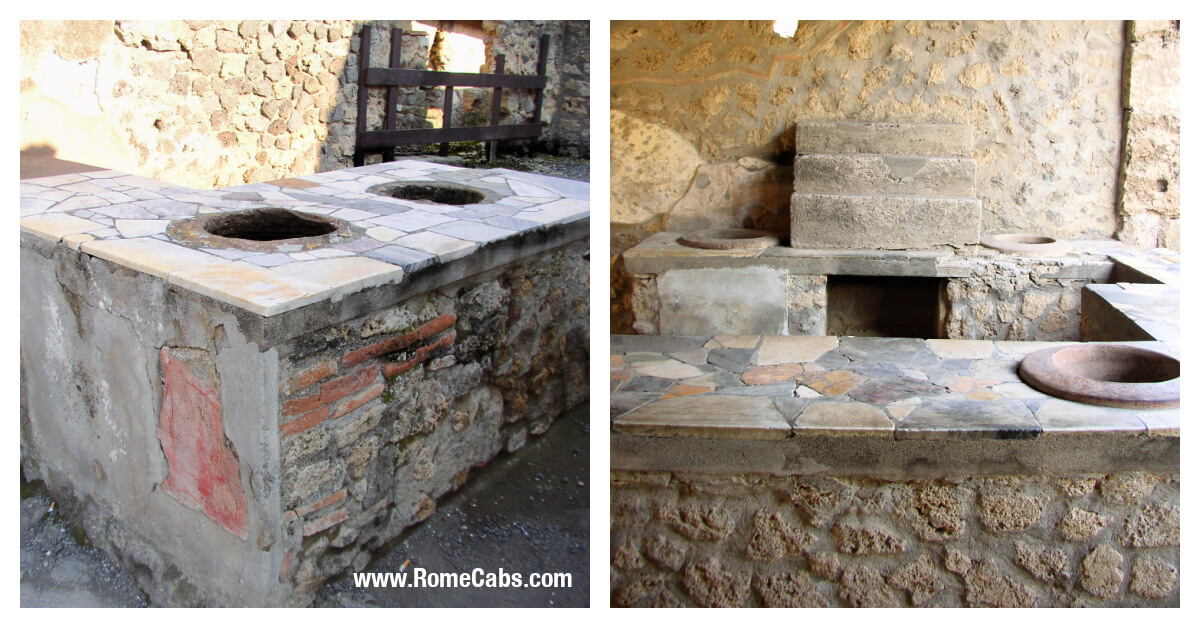
Such eateries provided food and drink to their patrons, confirmed after the discovery of utensils and crockery in its vicinity. Menus were usually frescoed images on a wall depicting the food items the thermopolium served.
At a thermopolium, a stone counter usually opened out onto the street and contained round openings that acted as hollow cavities inside which the food was cooked in large ceramic jars and then served to the customers. It is believed to have been about 80 such eateries in Pompeii serving quick meals and snacks to the public.
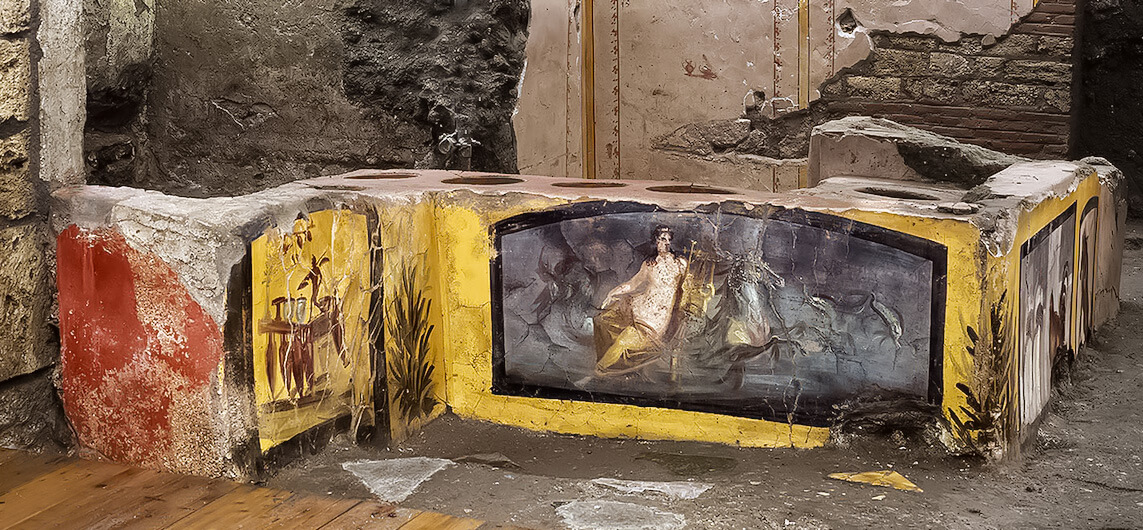
In late 2020 researchers uncovered a spectacularly well-reserved thermopolium covered with vibrant frescoes of life scenes as well as animals whose meat was cooked at the thermopolium such as ducks and a rooster.
Traces of pork, beef, fish, and snails were discovered in storage vessels indicating Pompeiians consumed a variety of dishes prepared with products of animal origin. Also uncovered inside the shop were nine amphorae, a bronze drinking bowl, two flasks, and other terracotta containers.
4. Ancient Graffiti on the walls of Pompeii
The word “Graffiti” comes from the Italian word graffiare which means to “scratch”.
And this is how graffiti started out, as words or images scratched or even drawn or painted onto ancient walls such as discovered Pompeii. Over 500 walls in Pompeii have been “graffitied” by ancient Pompeiians that recreates the life of this ancient town, giving voices to the bygone people who lived here, and gifting us a glimpse into their thoughts and lives.
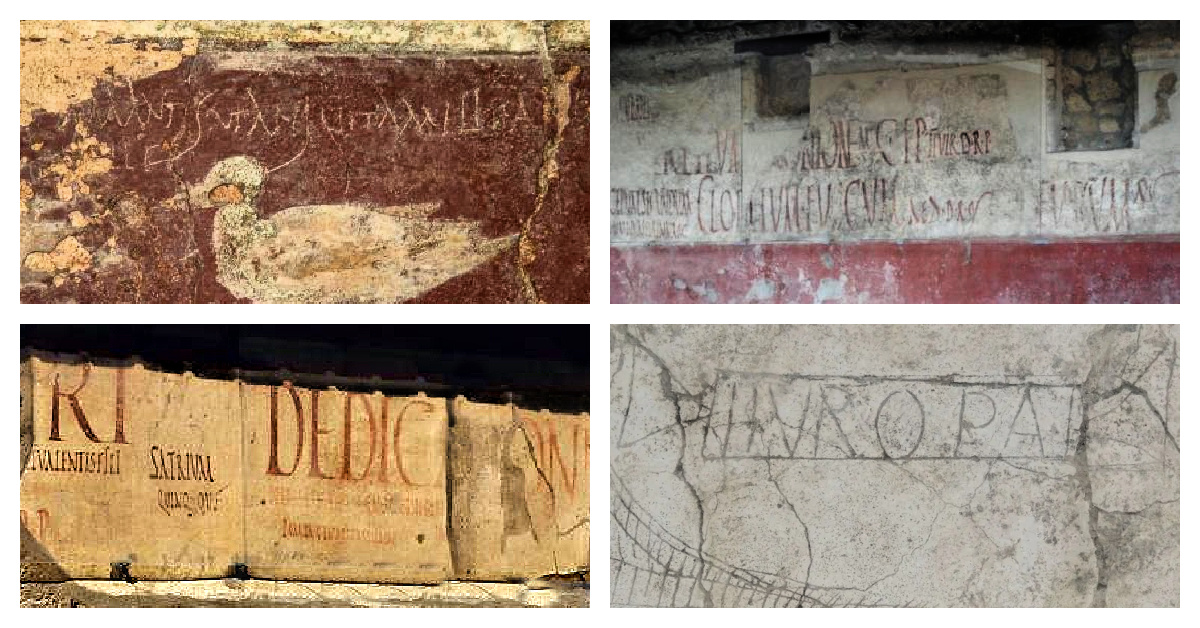
The oldest known graffiti in Pompeii dated to October 7, 78 BC shows that the ancient Romans were not all that different from us with the classic inscription: "Gaius Pumidius Diphilus was here”.
Some ancient inscriptions include declarations of love such as: “I don’t want to sell my husband, not for all the gold in the world” ….“Health to you, Victoria, and wherever you are may you sneeze sweetly” …. “Love dictates what I write and Cupid guides my hand: may I die if I wished to be a god without you.”
Some also include insults such as Sanius to Cornelius: "Go hang yourself!” ….‘Epaphra glaber es’ (Epaphra, you are bald!) …. "Rusticus est Cordyon" (Corydon is a clown)
This was written on a tavern wall which can be applied to modern-day situations too: “If you’re going to fight, get out!”
Others are a little more unusual, such as this inscription on the wall of the latrine, “I am Apollinaris. I am the doctor of the Emperor Titus. I have defecated very well here. It was on the wall of the latrine.”
When you visit Pompeii, keep an eye out and perhaps you might discover ancient graffiti engraved on a wall.
5. Pompeii remained undiscovered for 1,500 years
Survivors who managed to escape Vesuvius’ destructive eruption may have returned back in search of lost relatives or personal belongings, but there was nothing left for them to find. Pompeii, along with the nearby town of Herculaneum, was left abandoned and lost to time. The instant entombment of these cities protected them from looting, vandalism, and the destructive forces of nature for 17 centuries.
During the Medieval Era, this deserted area was referred to as “La Civita” (the settlement), perhaps inspired by folk tales of Pompeii’s ancient existence.
The ruins of Pompeii were first discovered late in the 16th century by Domenico Fontana, an Italian architect who excavated a canal during new constructions. When he discovered an inscription of “Pompeii”, it was erroneously attributed to the Roman general Pompey the Great, and no additional explorations were undertaken.
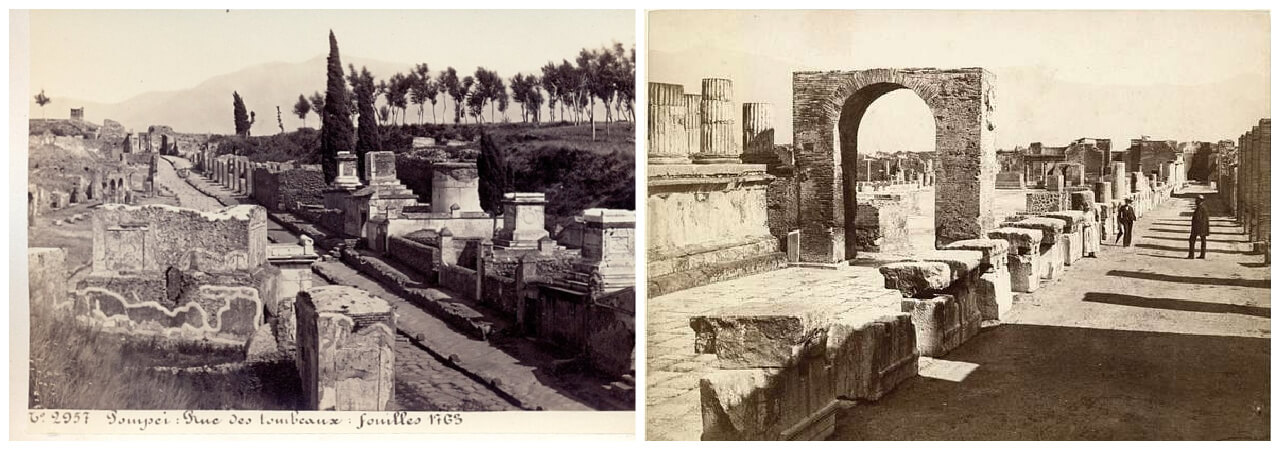
The focus on unearthing Pompeii did not begin until 1748 when early excavations uncovered an amphitheater with an inscription that identified the site as Pompeii: REI PUBLICAE POMPEIANORUM.
In 1755 King Charles of Naples launched a Royal Academy in Naples devoted to discoveries in Pompeii. Karl Jakob Weber, a Swiss engineer, took control of the excavation efforts in Pompeii initiating more cautious and organized methods of excavation than the prior haphazardous digging by inexperienced workers and treasure seekers.
This marked the beginning of modern archaeology which inspired European fervor for classical antiquity. Intrigued Grand Tour travelers from Britain made their way to Pompeii and Herculaneum to enhance their cultural standing.
6. Volcanic ashes preserved Pompeii’s ruins
Beneath the tons of volcanic ash, Pompeii survived almost exactly as it was 2,000 years before, a snapshot of its last days. Most of the buildings are still intact, skeletons of the victims were frozen where they’d fallen. Everyday objects and household goods were found scattered on the streets. Why was everything preserved so well?
A persistent and rapid downpour of volcanic ash from a large eruption such as Vesuvius is ideal for preserving what existed by burying them in place without completely breaking or burning them. No other natural catastrophe has the capability to simultaneously bury and preserve. Lack of air and moisture further aided the preservation of buried items such as fruit and loaves of bread (read below about 2,000-year-old carbonized bread).
7. Pompeian Red, Pompeii’s trademark color
The lavish colors on painted walls of the opulent villas of Pompeii used natural sources to obtain these shades.
One particular color found in many houses that became the signature color of Pompeii is the Pompeiian Red. Since its discovery, Pompeiian red became the favored color for smart interior decorating.
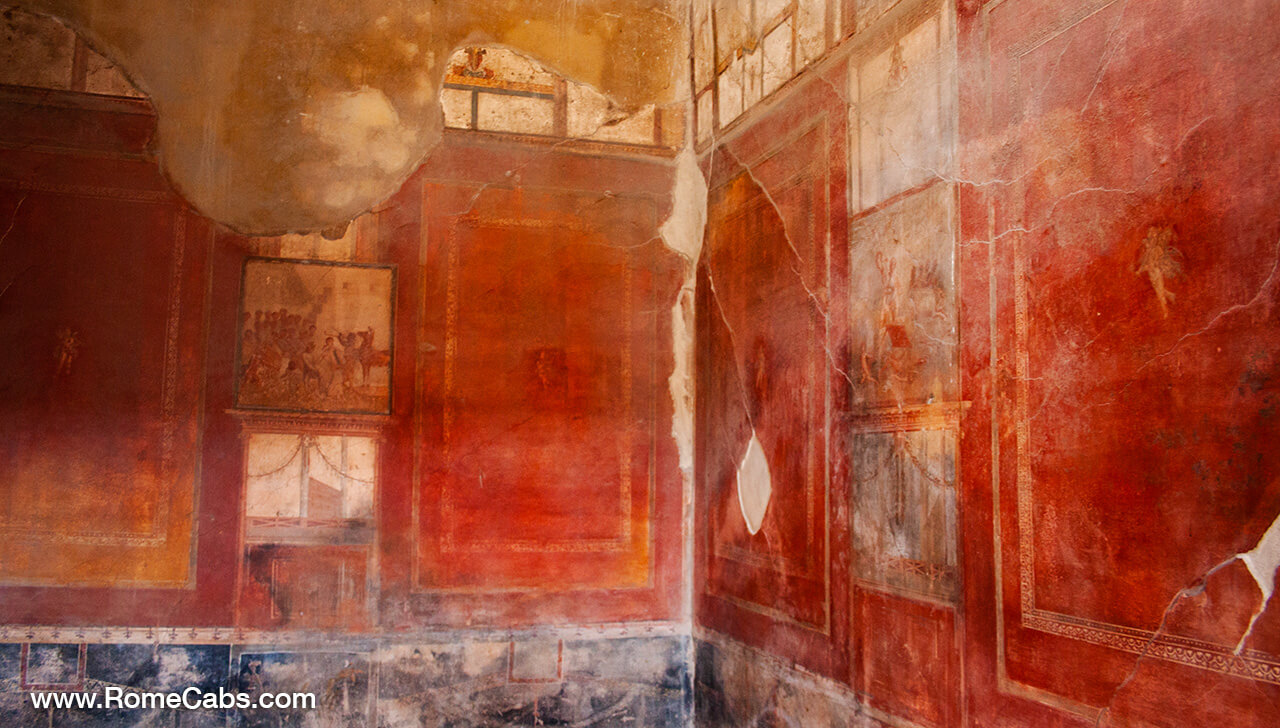
Red was an extremely expensive and valued color in ancient times. Perhaps the most famous set of Pompeiian red frescoes is those in the “Villa of the Mysteries” where a group of enigmatic figures performs mysterious rituals against a vivid red background.
Recent studies discovered that in many cases, the original color was ochre yellow known as Sinopsis in ancient times, derived from the ancient Turkish city of Sinope from where the pigment first appeared.
However, during the catastrophic pyroclastic flow from the volcanic eruption, the gasses and intense heat which overwhelmed the ancient town acted on the pigment of the walls thermally transforming the ochre yellow into an intense fiery red characteristic of Pompeiian houses.
Obtaining this sensuous shade of red by roasting yellow ochre was already known in ancient times as described by the Roman writer Pliny. The brilliant Pompeiian red was also achieved using cinnabar pigment, which is the highly toxic mercury sulfide.
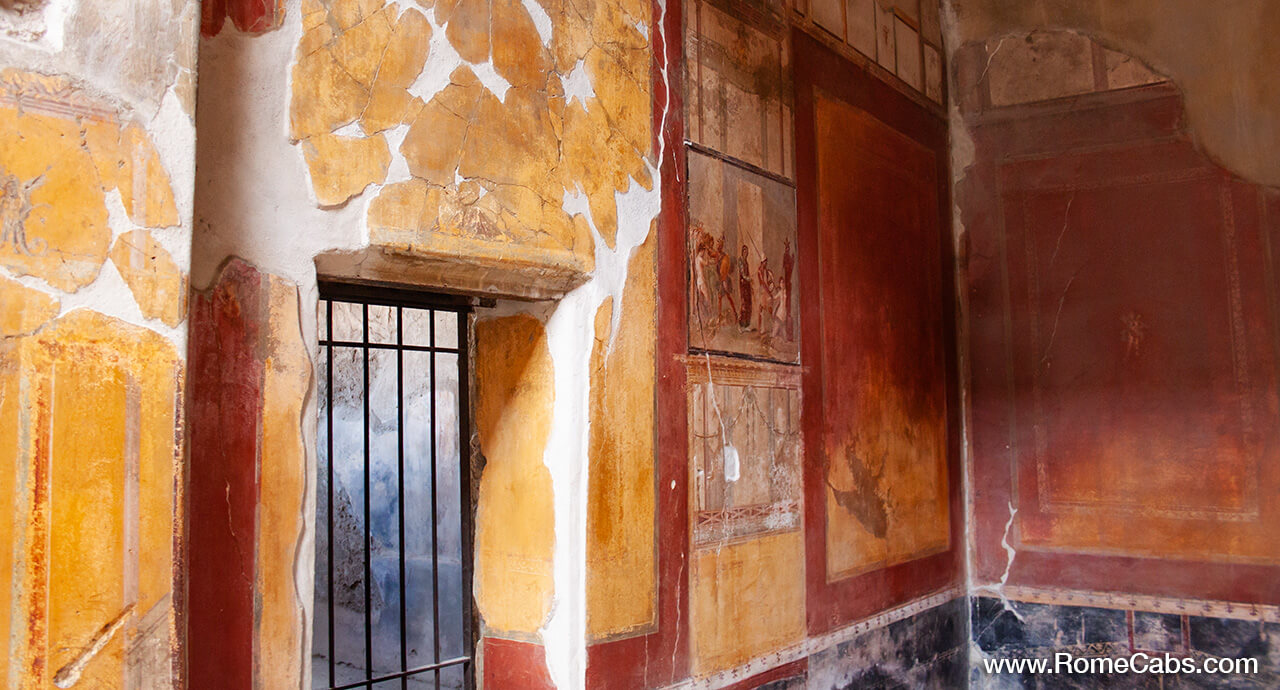
It is then likely that while many buildings became red due to the eruption, some were already painted this signature red color. Experts found that at the moment there are 246 walls perceived as red, and 57 walls perceived as yellow. However, based on new research, the numbers are closer to 165 red and 138 yellow.
If you wish to achieve the same Pompiian red in your decor, look no further than burnt sienna from Tuscany whose main color component is iron oxide.
8. Bodies of Pompeii were cast by researchers
In 1863 archaeologist Giuseppe Fiorelli discovered human-shaped voids within the ash that hardened like natural cement. The bodies of the entombed victims decayed within the hardened ash, leaving hollow spaces behind. The bones often collapsed into a pile in the bottom of the hole, often closely retaining their anatomical position.
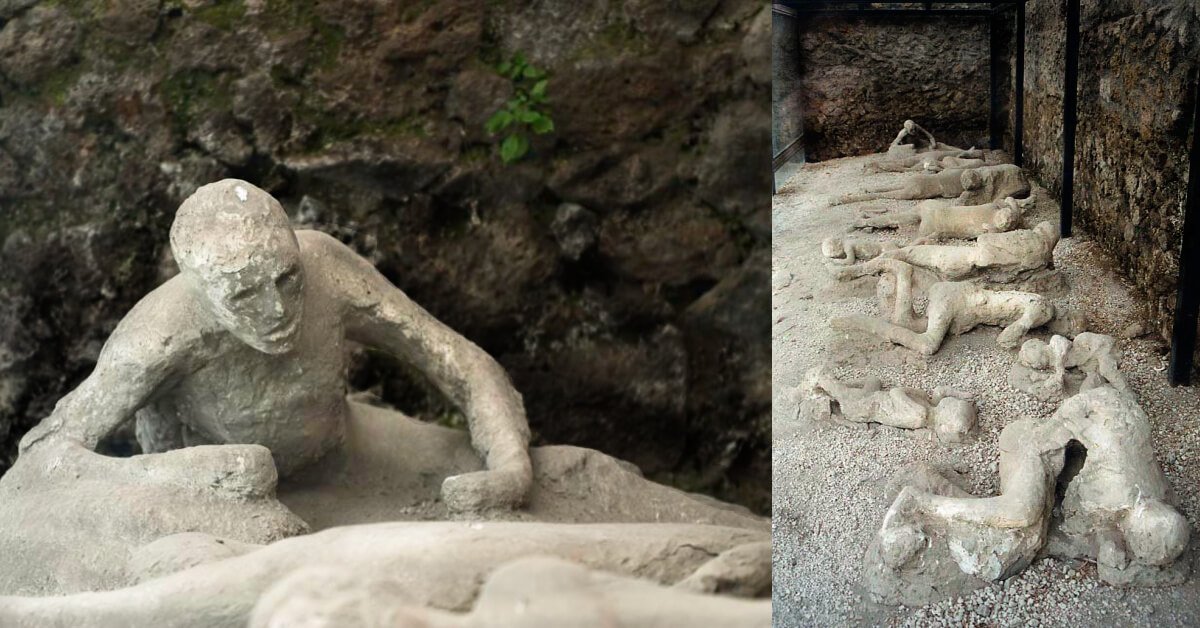
Archaeologists then poured plaster (and more recently resin) into these cavities and allowed it to harden. Once the plaster or resin hardened, the ash around the cast was removed revealing the shapes of the cast bodies. This allowed archaeologists to reconstruct the death poses of the victims of the eruption.
About 1,000 casts have been made of the dead bodies found in Pompeii, which included entire families, groups, or couples who died in an embrace. The casts of human and animal remains remind us of the tragic loss of life, and archaeology made it possible for us to better understand this important event in Italy’s ancient history.
9. 2,000-year-old bread and other food survived
Among the most unique findings in Pompeii are food remnants. They helped us learn about what types of food the locals consumed and how healthy their diet was. Whole eggs, fruit, and nuts were discovered preserved in the ash.
One exciting find was the discovery of several carbonized loaves of bread Panis Quadratus that were so well preserved that they looked as if they just came out of the ovens they were baked in. Throughout your visit in Pompeii, you will discover bakeries with baking ovens.
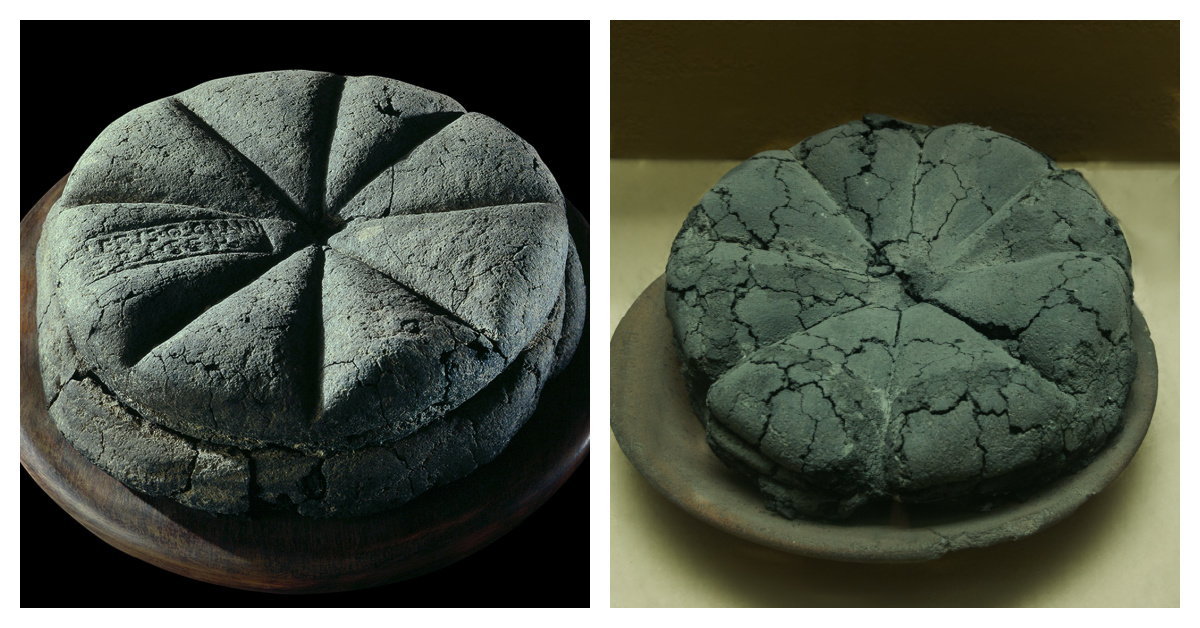
These large round sourdough loaves of bread made with common wheat (triticum aestivum) weighed almost 3 lbs (1.3 kg or 4 Roman libre) and were segmented into eight pieces so diners would easily break it into eight even sections as serrated bread knives were not readily available.
A hole was made in the center of the loaf. Often the bread had a stamp identifying the baker imprinted on the crust and before baking, and a cord was tied around its “waist possibly to help the bread vendor carry multiple loaves of bread at a time.
You too can recreate the ancient Roman Panis Quadratus using similar ingredients and methods.
- ALSO READ: How far is Pompeii from Rome?
10. Pompeii is a UNESCO World Heritage Site
Last but not least on our 10 Curiosities You Probably didn’t know about Pompeii Ruins is that Pompeii is a UNESCO World Heritage Site.
On December 6, 1997, Pompeii was enlisted as a UNESCO World Heritage Site along with Herculaneum and Torre Annunziata as they offer a vivid snapshot of architecture, art, and urban organization, and represent a valuable record of daily life and society at a specific moment in history unlike any other in the world.
The three cultural criteria defined by the World Heritage Committee were:
Criterion iii: The only Roman cities whose ruins are preserved in such an exceptional way that they have no parallels in integrity and extent in the world.
Criterion iv: The sites provide a full picture of Roman life from the 1st century BC to the 1st century AD through the preserved urban, architectural, decorative, and daily life aspects.
Criterion v: The sites are outstanding examples of urban and suburban Roman settlements. They also provide a vivid and comprehensive picture of Roman life at one precise moment: the eruption of Mount Vesuvius in 79 AD.
The ruins of Pompeii are truly magnificent as they represent a moment in the life of an ancient 1st-century AD Roman city. As researchers continue to uncover new treasures buried below the volcanic ash, new information and knowledge emerge sharing new secrets about this ancient city that was instantly entombed and frozen in time like a time capsule.
Thank you for reading our blog 10 Curiosities You Probably Didn’t Know about Pompeii Ruins and for choosing Stefano’s RomeCabs for your Amalfi Coast Tours from Rome, Shore Excursions from Naples, and Transfers from Rome to Sorrento. We look forward to showing you beautiful places in Italy!
* Find us online also on:
- RomeCabs FACEBOOK
- RomeCabs PINTEREST
- RomeCabs TWITTER
- RomeCabs INSTAGRAM
- RomeCabs FLICKR Photo Gallery
- Recommended on Cruise Critic
